The CAD Way
 In Indonesia CAD, rather than BIM, remains the main working tool of architects.
In Indonesia CAD, rather than BIM, remains the main working tool of architects.
by Erwin Maulana
Computer aided drawing, or CAD, is an engineering system which has been used by the manufacturing, construction and architectural industries since the 1980s. For the architect, the CAD system has become a tool that changes the work pattern of an architect from drafting to designing, expressing ideas and presenting plans in detail.
Today the American Institute of Architecture (AIA) through vendors of the CAD system have gone a step further, applying building information modeling (BIM) as the standard for architectural working systems. As a result BIM has been adopted by architects in various countries across Asia, including China and Singapore. In Indonesia, however, CAD remains the main working tool of architects––and BIM seems a distant future.
According to Rizal Syarifuddin and Liza Wiryawan from the Indonesian Architecture Institution (IAI), although CAD has a larger range of working tool elements compared to BIM, it is far less complex, as it simply changes the pattern of the architect’s work by bringing it from the drafting table to the computer. BIM, on the other hand, is capable of changing the entire design procedure in architecture.
Syarifuddin and Wiryawan, who are both in IAI’s CAD Team, said CAD entered Indonesia at the end of 1980 when then-Minister of Research and Technology, BJ Habibie, launched a large project called the Centre for Science and Technology Research (Puspiptek). At the time, a consortium of architectural consultants was formed––consisting of the country’s ten biggest architectural consultants––and subsequently named Archi-10. They were the first to apply CAD in Indonesia, thus demonstrating that Indonesia was not slow in anticipating CAD technology. By the 1990s students and educational institutes were well versed in CAD.
Afterwards, CAD technology was naturally compulsory for those involved in the construction industry. But here problems arose: because many industry players were strapped for cash and had low levels of awareness regarding software copyright, there was widespread use of illegal CAD software. The reality was that a wide gap existed between large, technology-savvy firms in Jakarta (and most of Java) which handled large scale projects; and their smaller, ‘traditional’counterparts outside the capital, which had poor access to information and technology, struggled to make ends meet, and therefore had to resort to using illegal CAD software. The situation prompted IAI to negotiate, around 2001 and 2002, for discounted prices from CAD vendors. From IAI’s perspective, it was important to note that its members were mostly small and medium firms that were uanble to charge much for their services and therefore lacked the means to buy legal software. Making legal software cheaper, IAI said, would eliminate the widespread use of illegal software. Vendors of CAD software, on the other hand, argued they had to pay hefty import taxes for their products which, conseqently, meant they could not cut down on prices.
The situation prompted IAI to negotiate, around 2001 and 2002, for discounted prices from CAD vendors. From IAI’s perspective, it was important to note that its members were mostly small and medium firms that were uanble to charge much for their services and therefore lacked the means to buy legal software. Making legal software cheaper, IAI said, would eliminate the widespread use of illegal software. Vendors of CAD software, on the other hand, argued they had to pay hefty import taxes for their products which, conseqently, meant they could not cut down on prices.
During this time, IAI also conducted an authorised training centre for CAD systems. This started in 1999 but ended in 2004, when IAI was unable to pay its annual fees owing partly to the fact that IAI’s market consisted mainly of students and fresh graduates of architecture.
Meanwhile, from the end of 2005 law enforcers started clamping down on users of illegal software, including CAD systems; several architecture firms in Indonesia were affected.
Still, IAI was aware of the importance of CAD as a working tool for architects. So IAI started to investigate––through surveys and researches––more affordable alternatives. Discussions with architect associations in other countries, such as the Philippines, Singapore and China, resulted in several alternative brands that IAI urged its CAD Team to try.
Syarifuddin said the main consideration for choosing a CAD replacement software was its compatibility with, or at least its similarity to the CAD platform previously employed by the user. He said some countries had developed their own CAD software, such as Singapore, through the Singapore Institute of Architects (SIA). IAI would also like to see this happen in Indonesia, he said.
Syarifuddin said that based on its surveys, IAI had chosen CAD software by IntelliCAD Technology Consortium (ITC), an organisation of software developers of IntelliCAD, a computer aided design engine.
Rizal hoped IAI could one day develop its own CAD system under an IAI CAD Centre: “We hope our CAD Centre will eventually be doing three things: firstly, trade. We will conduct the procurement and distribution of the system, to make it convenient for our members.
“Secondly, we will open a CAD training centre to provide training to architecture students, young architects, members and non-members of IAI, to allow them to know more about CAD systems and technology. We will not limit the CAD to certain vendors; we will, as much as possible, provide training for all CAD systems according to user demands.
“Thirdly, we want our own CAD system to match our needs in Indonesia as well as users’ individual needs––be they architects, community members or others in the architecture industry. We will develop plug-ins, libraries and other matters related to the CAD system.”
He said IAI is optimistic about the future of the architectural profession. Several milestones that are cause for celebration are: firstly, the implementation of the Architects’ Act in the foreseeable future (see sidebar for more information). According to current copyright regulations in Indonesia, the value of an architect’s work lies only in the draft work; in fact, the work of architects involves much more than just drafting, as it includes the creation of design ideas and concepts. The association holds high hopes for the bill on the Architects’ Act which was recently submitted to the People’s Representative Council. The Act protects the architectural profession; it protects users of architectural services; and therefore increases community appreciation for the architectural profession.
The second cause for optimism, Syarifuddin said, was the prediction by various economic observers of high growth in Indonesia’s construction industry in future years.
The two conditions above will hopefully increase the wellbeing of architects and their ability to apply trends in design and technology.
© Copyright 2007 FuturArc. All rights reserved. Reproduction in whole or in part without permission is prohibited.



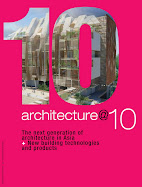
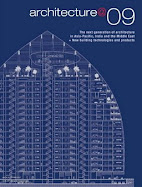




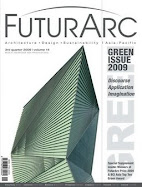



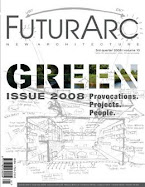








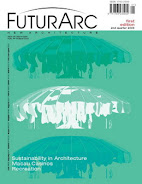



1 comment:
nice
Post a Comment